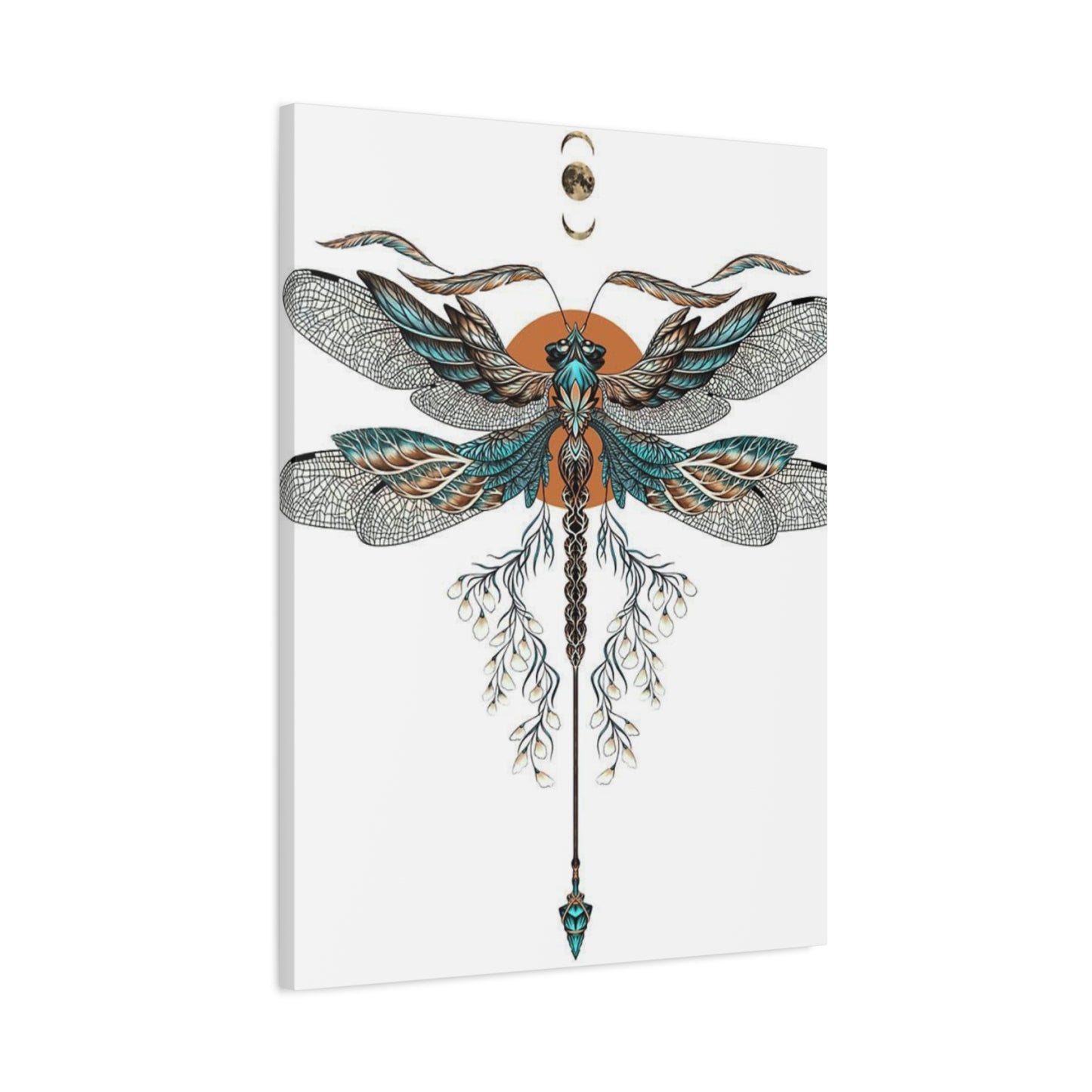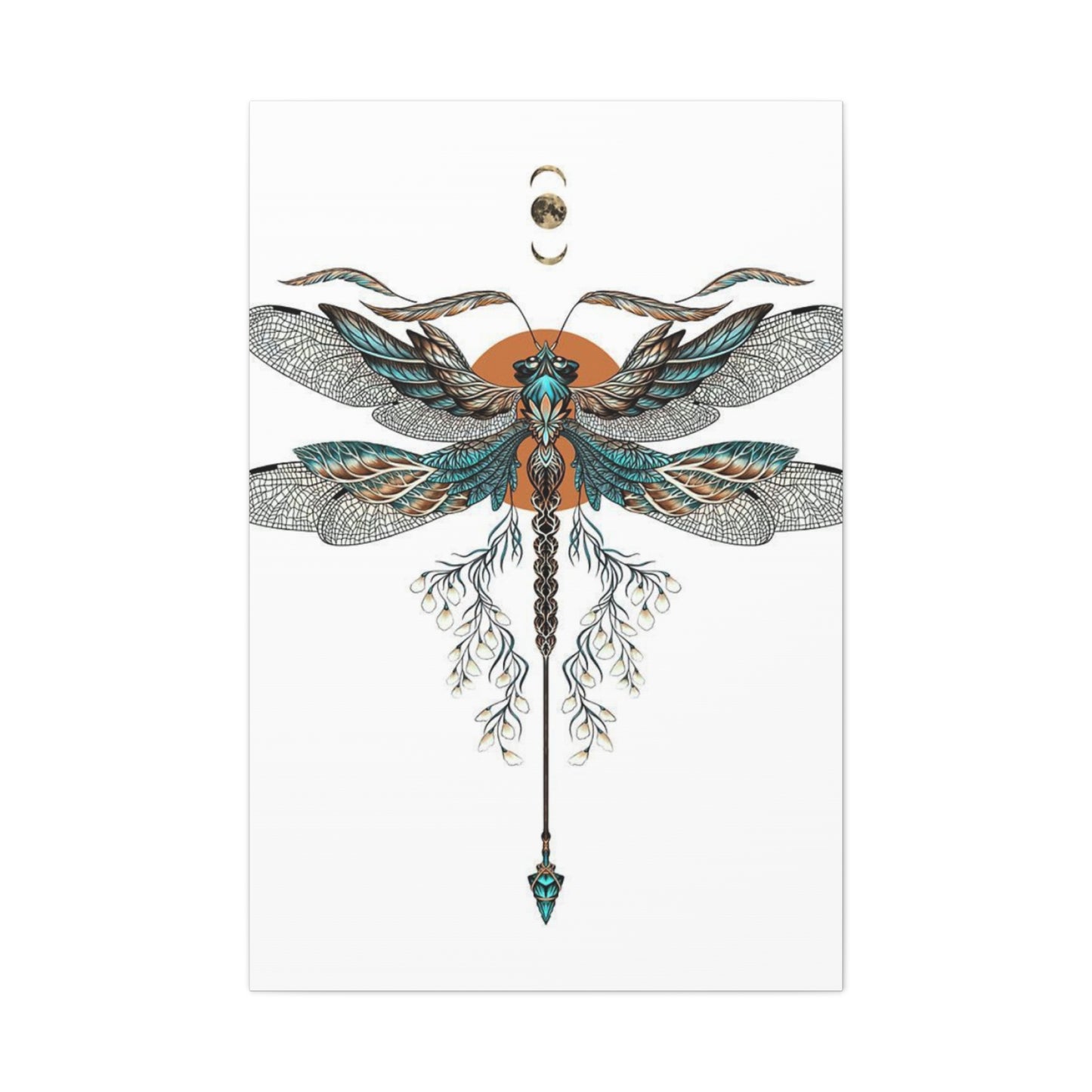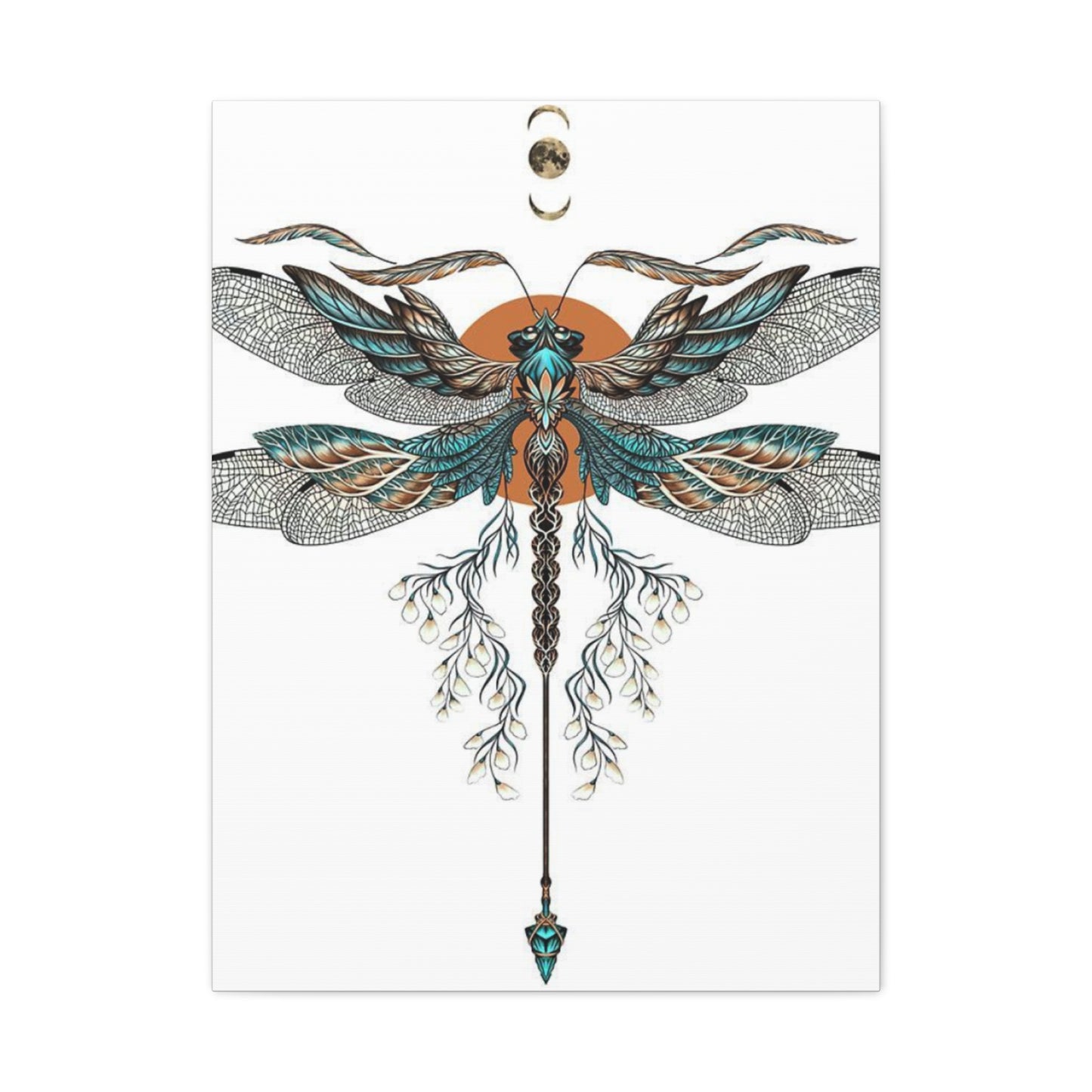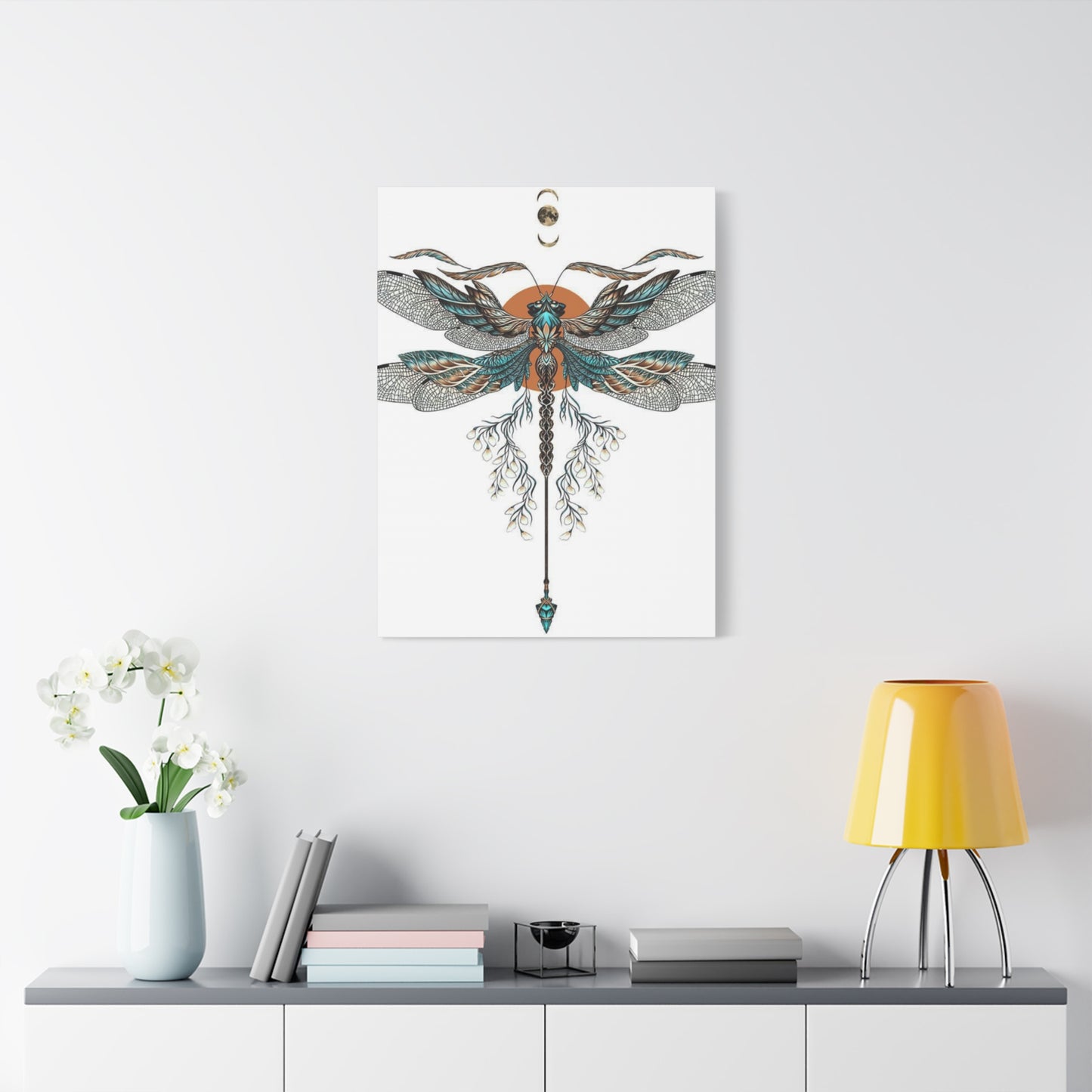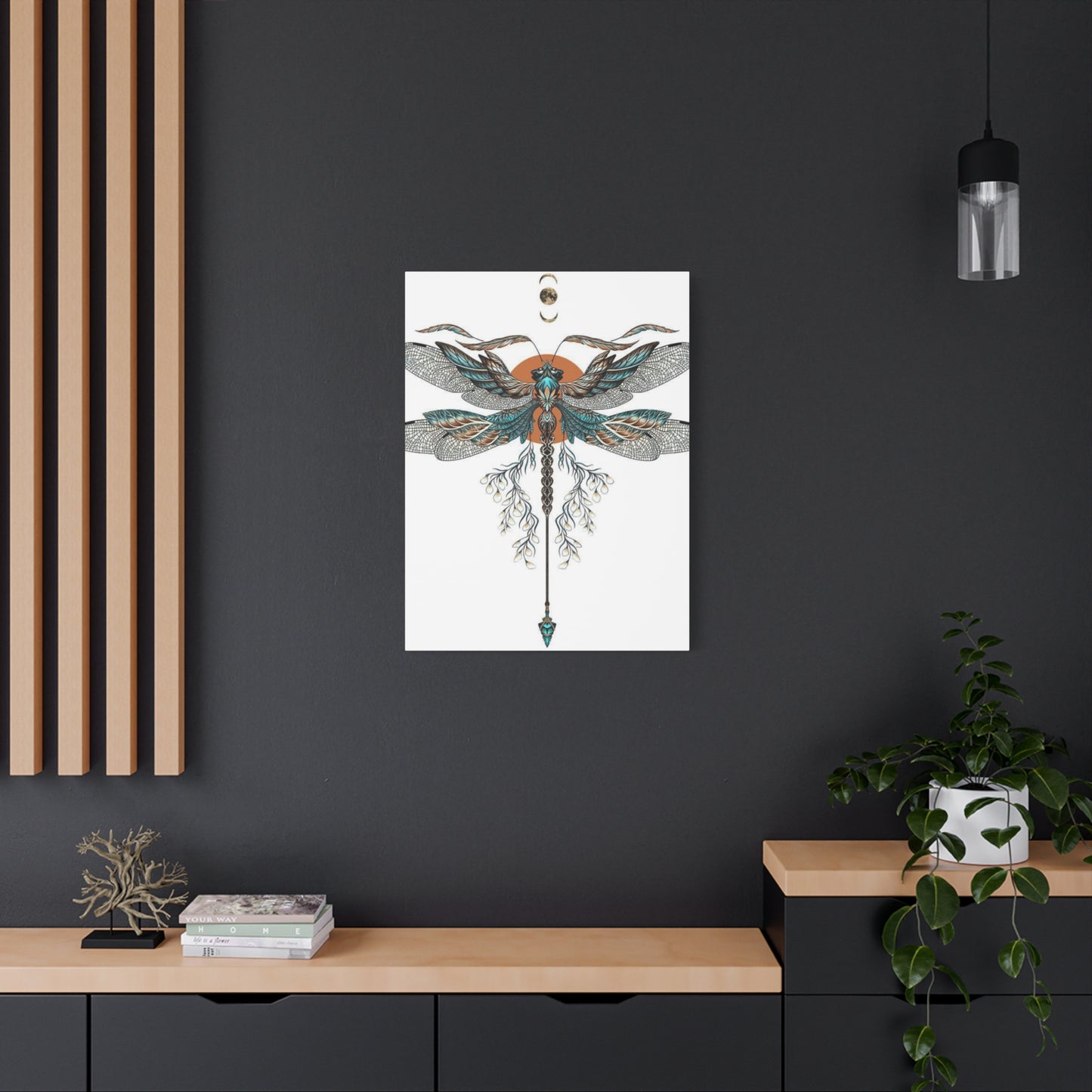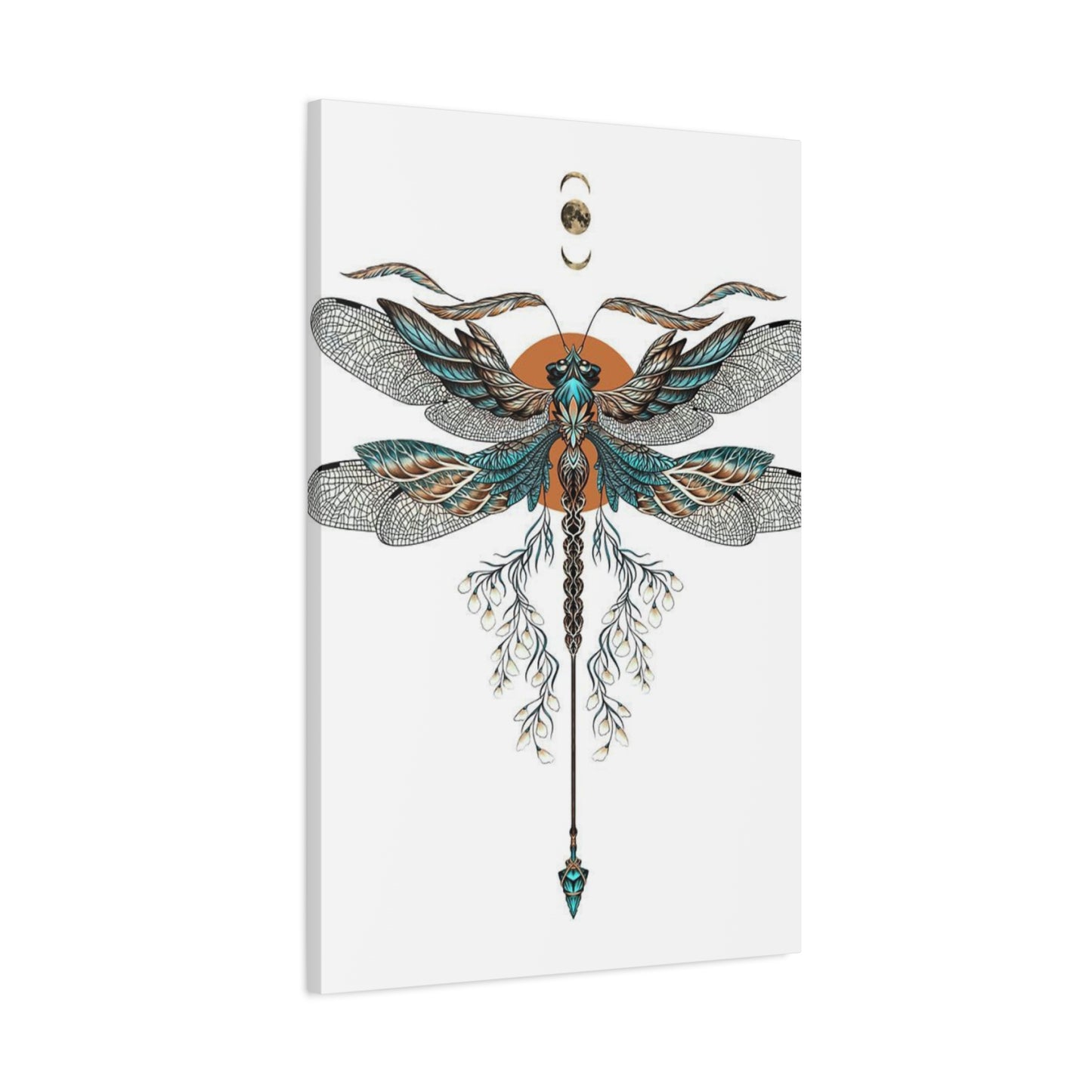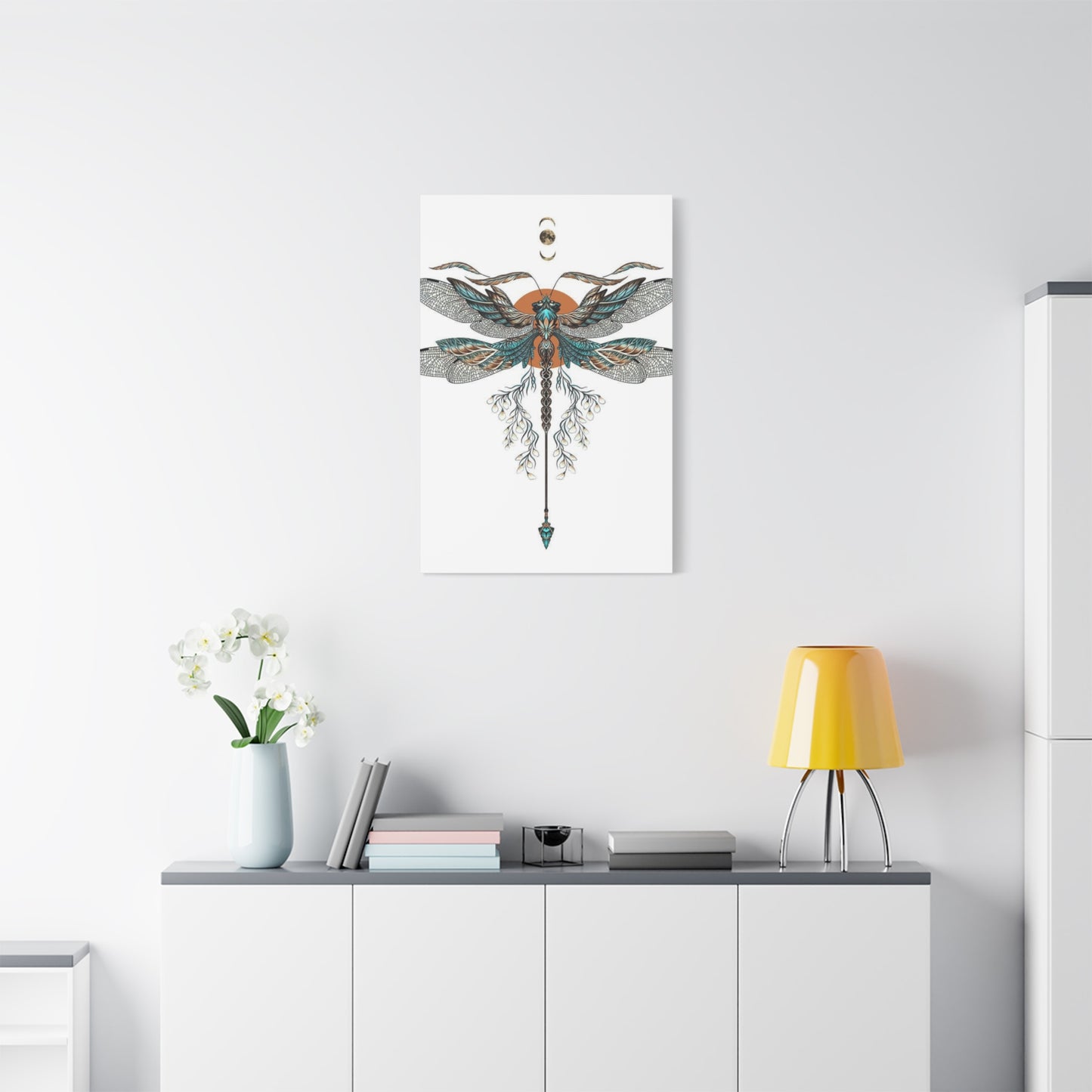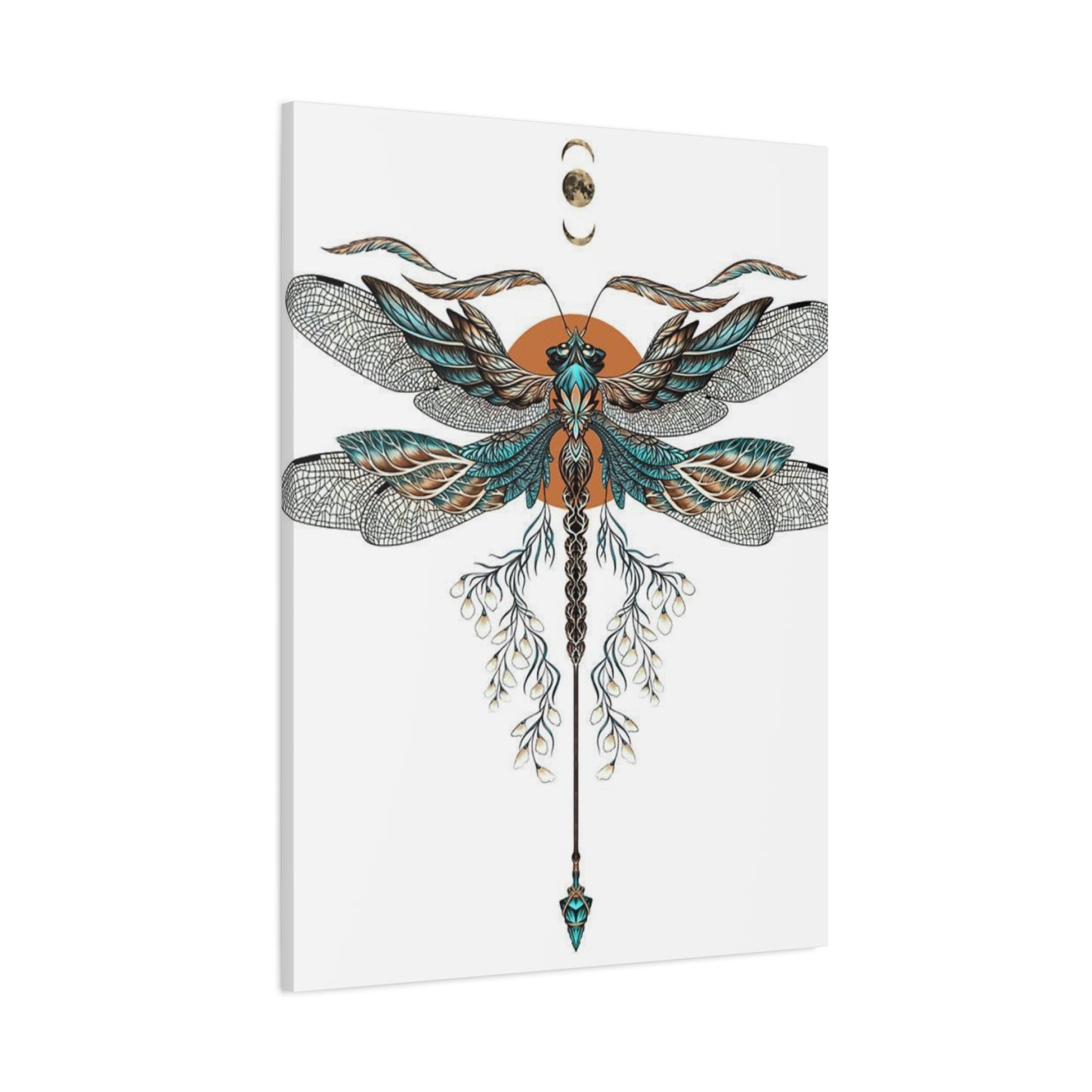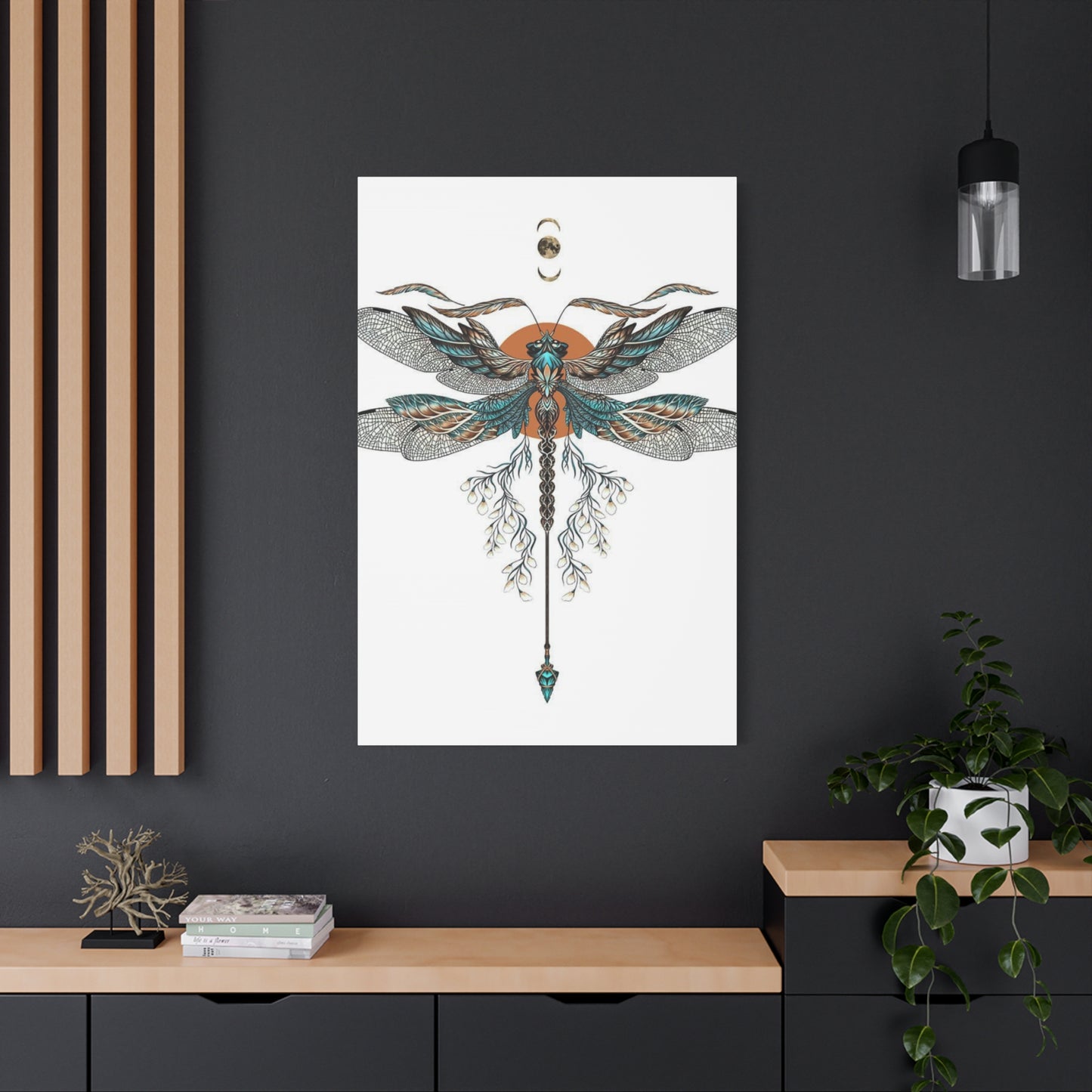Dragonfly Wings Wall Art: Captivating Nature’s Elegance for Your Space
Dragonfly wings wall art represents one of nature's most captivating subjects, offering homeowners and art enthusiasts an opportunity to bring the ethereal beauty of these magnificent creatures into their living environments. The delicate, translucent quality of dragonfly wings has fascinated artists and photographers for centuries, creating stunning visual pieces that combine scientific precision with artistic interpretation. These remarkable insects, with their gossamer wings that seem to shimmer with otherworldly light, provide endless inspiration for wall art that can transform any room into a sanctuary of natural wonder.
The appeal of dragonfly wings wall art extends far beyond mere decoration. These pieces serve as windows into the microscopic world, revealing intricate patterns and structures that are often invisible to the naked eye. When captured through photography, illustration, or mixed media, dragonfly wings become mesmerizing focal points that draw viewers into contemplation of nature's extraordinary design capabilities. The way light plays across the membranous surfaces creates an almost magical effect that changes throughout the day as natural illumination shifts and moves.
Modern printing technologies and artistic techniques have made it possible to reproduce the subtle nuances of dragonfly wings with remarkable fidelity. From macro photography that reveals every vein and cell structure to artistic interpretations that emphasize color and movement, dragonfly wings wall art encompasses a wide range of styles and approaches. Whether displayed as a single statement piece or arranged in collections, these artworks bring a sense of movement and life to static wall environments.
The versatility of dragonfly wings wall art makes it suitable for various decorating themes and personal preferences. In contemporary settings, the clean lines and geometric patterns found in wing structures complement modern aesthetics perfectly. For those who prefer more traditional approaches, vintage-style botanical prints featuring dragonfly wings can add scientific charm and educational value to studies, libraries, or educational environments. The natural color palettes found in dragonfly wings, ranging from iridescent blues and greens to warm amber and bronze tones, make these pieces adaptable to virtually any color scheme.
Collectors and art enthusiasts have discovered that dragonfly wings wall art offers unique investment potential, as high-quality pieces by recognized nature photographers and scientific illustrators continue to appreciate in value. The combination of artistic merit and educational significance creates a dual appeal that resonates with diverse audiences. Museums and galleries frequently feature dragonfly wings art in exhibitions exploring the intersection of science and art, highlighting the important role these pieces play in bridging the gap between scientific observation and artistic expression.
Beauty of Dragonfly Wings Art
The intrinsic beauty of dragonfly wings art lies in the extraordinary complexity and elegance of these natural structures. Each wing contains thousands of individual cells arranged in geometric patterns that rival the most sophisticated architectural designs. When artists and photographers capture these details, they reveal a hidden world of mathematical precision and organic beauty that exists in perfect harmony. The transparency of dragonfly wings allows light to pass through while creating prismatic effects that produce subtle color variations and luminous qualities that seem to glow from within.
Artists working with dragonfly wings as subject matter often find themselves drawn to the challenge of representing something so delicate and ephemeral in permanent form. The wings themselves are masterpieces of natural engineering, combining strength and flexibility in structures so thin they appear almost ethereal. Professional photographers who specialize in macro work dedicate countless hours to capturing the perfect lighting conditions that reveal the wing's membrane structure while preserving the sense of lightness and movement that defines these creatures.
The artistic interpretation of dragonfly wings ranges from scientifically accurate reproductions to abstract representations that emphasize emotional impact over literal representation. Watercolor artists particularly excel at capturing the translucent quality of wings, using transparent pigments and careful layering techniques to recreate the way light interacts with these natural membranes. Oil painters approach the subject with different techniques, often focusing on the interplay between light and shadow to create dramatic compositions that emphasize the sculptural qualities of extended wings.
Digital artists have embraced dragonfly wings as subjects for innovative techniques that push the boundaries of traditional representation. Through careful manipulation of color, contrast, and saturation, digital artworks can enhance the natural iridescence of wings while maintaining the essential character of the original subject. These modern approaches allow for creative interpretations that might emphasize certain aspects of wing structure or color that would be impossible to achieve through traditional photography or painting techniques.
The beauty of dragonfly wings art also lies in its ability to evoke emotional responses that connect viewers with the natural world. The delicate nature of wings serves as a metaphor for fragility and transformation, themes that resonate deeply with human experience. Many people find themselves drawn to dragonfly wings art because it represents change, growth, and the ephemeral nature of life itself. This symbolic dimension adds layers of meaning to purely aesthetic appreciation.
Contemporary artists continue to find new ways to interpret dragonfly wings, incorporating mixed media approaches that combine photography with painting, digital manipulation with traditional printmaking, or sculptural elements with two-dimensional representation. These innovative approaches keep the subject matter fresh and relevant while honoring the timeless appeal of these natural forms. The result is a rich variety of artistic expressions that can satisfy diverse tastes and decorating requirements.
The scientific accuracy possible in modern dragonfly wings art adds another dimension to its beauty. High-resolution photography and advanced printing techniques can reproduce wing structures with such precision that the resulting images serve both artistic and educational purposes. Viewers can appreciate the aesthetic qualities while simultaneously learning about insect anatomy, wing mechanics, and the role these structures play in dragonfly flight and survival.
Detail in Dragonfly Wings Prints
The level of detail achievable in modern dragonfly wings prints represents a remarkable convergence of technological advancement and artistic vision. Contemporary printing methods can reproduce microscopic structures with such precision that viewers can examine individual wing cells, vein patterns, and membrane textures that would require magnification equipment to observe in living specimens. This extraordinary level of detail transforms wall art into educational tools that reveal the incredible complexity of natural design while maintaining strong aesthetic appeal.
High-resolution scanning techniques used in creating dragonfly wings prints can capture details at the cellular level, revealing the intricate network of supporting veins that give wings their strength and flexibility. These veins, called costa, subcosta, radius, and other anatomically specific terms, create patterns that vary between species and even individual insects. When reproduced in large-format prints, these details become architectural elements that showcase nature's engineering capabilities while creating visually striking geometric compositions.
The membrane structure between veins, known as the wing blade, contains its own fascinating details that become visible only through careful examination and expert reproduction techniques. Tiny hairs, called setae, along wing edges can be reproduced in prints that use sufficiently high resolution capture methods. These microscopic details add texture and authenticity to prints while providing viewers with opportunities to discover new elements each time they examine the artwork.
Color reproduction in detailed dragonfly wings prints requires specialized techniques to accurately represent the subtle iridescence and transparency that characterize these natural structures. The challenge lies in capturing effects that result from the interaction of light with microscopic surface structures rather than pigmentation alone. Advanced printing methods can simulate these optical effects through careful layering of transparent and metallic inks that recreate the shimmer and color-shifting properties of actual wings.
Professional photographers who create source materials for dragonfly wings prints often employ focus stacking techniques to achieve sharp detail throughout the entire wing surface. This process involves taking multiple photographs at different focal distances and combining them digitally to create images where every part of the wing appears in perfect focus. The resulting prints reveal details that would be impossible to see clearly in a single photograph, creating artworks that surpass what human vision can accomplish unaided.
The printing substrate chosen for detailed dragonfly wings prints significantly impacts the final result. Fine art papers with smooth surfaces can reproduce the finest details while maintaining color accuracy, but textured papers might add artistic interest at the expense of some detail resolution. Canvas prints offer durability and a traditional artistic feel, though the texture may obscure some of the finest details that make these prints so fascinating from a scientific perspective.
Lighting plays a crucial role in appreciating the details present in high-quality dragonfly wings prints. Proper illumination can bring out subtle textures and patterns while inappropriate lighting might wash out delicate details or create glare that interferes with viewing. Many collectors invest in specialized picture lighting systems that can be adjusted to optimize viewing conditions for different times of day and viewing angles.
The educational value of detailed dragonfly wings prints extends beyond simple appreciation of natural beauty. Biology students, researchers, and curious individuals can use these prints to study wing structure, compare different species, and understand the relationship between form and function in these remarkable natural mechanisms. Museums and educational institutions frequently use high-detail dragonfly wings prints as teaching aids that allow large groups to examine structures that would normally require individual microscope access.
Choosing Wings Wall Art
Selecting the perfect wings wall art requires careful consideration of multiple factors that influence both aesthetic impact and long-term satisfaction with your choice. The decision-making process begins with understanding your personal preferences, room requirements, and intended use for the artwork. Some individuals prefer scientifically accurate representations that showcase the natural beauty of dragonfly wings without artistic interpretation, while others gravitate toward more stylized or abstract approaches that emphasize color, movement, or emotional impact over literal representation.
Room size and layout significantly influence the appropriate scale and composition of wings wall art. Large, open rooms can accommodate oversized prints or multiple pieces arranged in gallery-style groupings, while smaller environments might benefit from more intimate single pieces that serve as focal points without overwhelming the available visual area. The height of ceilings, amount of natural light, and existing furnishings all play roles in determining what type of wings wall art will work best in any given setting.
The existing color palette of your room provides important guidance for selecting wings wall art that will integrate harmoniously with your current decorating scheme. Dragonfly wings offer a wide range of natural colors, from neutral browns and clear transparencies to vibrant blues, greens, and iridescent combinations that can either complement existing colors or provide striking contrasts that energize the visual environment. Understanding color relationships helps ensure that your chosen artwork enhances rather than conflicts with other design elements.
Quality considerations are paramount when investing in wings wall art, as printing methods, paper choices, and framing materials directly impact both appearance and longevity. Professional-grade prints using archival inks and acid-free papers will maintain their color and clarity for decades, while lower-quality reproductions may fade or discolor relatively quickly. The initial investment in higher-quality prints typically proves worthwhile through superior visual impact and lasting value.
The artistic style of wings wall art should align with your personal taste and the overall aesthetic of your decorating approach. Photorealistic images appeal to those who appreciate scientific accuracy and natural beauty, while impressionistic or abstract interpretations might better suit individuals who prefer more interpretive artistic expressions. Mixed media pieces that combine photography with painting or digital manipulation offer middle-ground approaches that balance realism with artistic creativity.
Framing choices play crucial roles in the final appearance and preservation of wings wall art. The frame style, matting options, and glazing materials all contribute to how the artwork appears and how well it will be protected over time. Professional framing using conservation materials ensures that valuable prints remain in pristine condition while enhancing their visual presentation through appropriate mounting and matting choices.
Budget considerations naturally influence wings wall art selection, but understanding the relationship between cost and quality helps make informed decisions that provide the best value for your investment. Original artworks by recognized artists command premium prices but offer unique ownership and potential appreciation value. Limited edition prints provide middle-ground options that combine artistic merit with more accessible pricing, while open edition reproductions offer the most affordable entry point into collecting wings wall art.
The reputation and credentials of artists or photographers whose work you're considering can provide valuable insight into the likely quality and lasting appeal of their creations. Established nature photographers and scientific illustrators with exhibition histories and professional recognition typically produce work that maintains its value and appeal over time, while emerging artists might offer innovative approaches at more accessible price points.
Colors in Dragonfly Wings Art
The color palette found in dragonfly wings art encompasses an extraordinary range of hues, tones, and optical effects that result from the unique structural properties of these natural formations. Unlike conventional pigmentation that absorbs and reflects specific wavelengths of light, dragonfly wings create color through microscopic structures that interfere with light waves, producing iridescent effects that shift and change depending on viewing angle and illumination conditions. This natural phenomenon provides artists with rich source material that challenges traditional color reproduction methods while inspiring innovative approaches to representing these dynamic visual qualities.
The base coloration of dragonfly wings varies significantly among species, ranging from completely clear and transparent membranes that appear almost glass-like to deeply tinted wings that display rich amber, bronze, or even dark purple hues. Clear wings create opportunities for artists to focus on structural details, vein patterns, and the subtle ways that light interacts with transparent surfaces. These minimalist color approaches often prove most effective when artists use careful attention to value relationships and subtle tonal variations to create compelling compositions.
Iridescent effects in dragonfly wings result from the interaction of light with microscopic ridges and platelets embedded in wing membranes. These structures act as natural diffraction gratings that separate white light into component colors, creating rainbow-like effects that shift as viewing angles change. Artists attempting to capture these effects must decide whether to represent a specific moment of color display or to suggest the dynamic nature of iridescence through compositional techniques that imply movement and change.
Blue and green tones dominate the iridescent displays of many dragonfly species, creating cool color harmonies that work particularly well in contemporary decorating schemes. These colors result from specific wavelength interactions that favor shorter frequencies in the visible spectrum. Artists working with these natural color relationships can create compositions that feel cohesive and harmonious while maintaining the essential character of their subject matter.
Warm colors also appear in dragonfly wings, particularly in species that display amber, orange, or bronze effects. These warmer tones often appear in older specimens or species that inhabit warmer climates, and they provide opportunities for artists to create compositions that feel more intimate and cozy. The combination of warm base tones with cool iridescent highlights creates complex color relationships that add visual interest and depth to artistic compositions.
Metallic effects in dragonfly wings inspire artists to experiment with metallic paints, foils, and digital techniques that can suggest the lustrous qualities of natural wing surfaces. These approaches require careful restraint to avoid overwhelming the delicate character of wing structures while still conveying the sense of luminosity that makes dragonfly wings so visually compelling. Successful metallic treatments enhance rather than dominate the overall composition.
The transparency of dragonfly wings allows background colors to show through, creating layered color effects that change depending on what lies behind the wings. Artists can use this characteristic to create compositions where wings interact with backgrounds in ways that produce color mixing and optical blending effects. This approach works particularly well in abstract or semi-abstract interpretations where the focus shifts from literal representation to color harmony and visual flow.
Color temperature plays an important role in dragonfly wings art, as the quality of light used during photography or painting significantly influences the apparent colors of wing membranes and iridescent effects. Cool lighting tends to emphasize blue and purple tones while warm lighting brings out amber and bronze qualities. Artists must make conscious decisions about color temperature that support their overall artistic intentions while remaining true to the essential character of their subject.
Environmental factors that influence color perception in living dragonflies can also inform artistic choices in wings wall art. The way natural sunlight, shade, and reflected light affect wing appearance provides guidance for artists who want to create realistic representations. Understanding these natural lighting effects helps artists make informed decisions about color choices that will feel authentic and convincing to viewers.
Symbolism of Dragonfly Wings
The symbolism associated with dragonfly wings transcends cultural boundaries and speaks to universal human experiences related to transformation, lightness, and spiritual transcendence. Throughout history, dragonflies and their wings have represented change and adaptation, largely due to their remarkable metamorphosis from aquatic nymphs to aerial adults. This biological transformation serves as a powerful metaphor for personal growth, spiritual evolution, and the human capacity to overcome limitations and achieve new levels of understanding and capability.
In many Eastern philosophical traditions, dragonfly wings symbolize the soul's journey toward enlightenment and the ability to see beyond surface appearances to deeper truths. The transparency of wings represents clarity of vision and the removal of illusions that prevent clear perception of reality. This symbolic interpretation makes dragonfly wings art particularly meaningful for meditation rooms, study areas, or other environments dedicated to contemplation and personal development.
The delicate nature of dragonfly wings serves as a reminder of life's fragility and the importance of treating precious things with care and respect. This symbolism resonates with individuals who have experienced loss or who are navigating difficult transitions in their lives. Wings wall art can serve as gentle reminders to appreciate beauty wherever it appears and to handle life's precious moments with appropriate reverence and attention.
Movement and freedom represent another important symbolic dimension of dragonfly wings. The ability to navigate three-dimensional environments with grace and precision symbolizes liberation from earthly constraints and the achievement of perspective that comes from rising above mundane concerns. For individuals feeling trapped by circumstances or seeking inspiration to overcome limitations, dragonfly wings art can serve as visual reminders of possibilities for transcendence and freedom.
The geometric patterns found in dragonfly wings have been interpreted as symbols of divine order and the mathematical principles that govern natural creation. The precise arrangement of veins, the symmetrical structure of wing pairs, and the repeated cellular patterns all reflect underlying organizational principles that suggest intentional design and purpose. This symbolic interpretation appeals to individuals who find meaning in the intersection of science and spirituality.
Cultural interpretations of dragonfly wings vary significantly across different societies and historical periods. Native American traditions often view dragonflies as messengers between earthly and spiritual realms, with wings serving as vehicles for communication between different planes of existence. Japanese culture associates dragonflies with strength, courage, and victory, making wings wall art appropriate for environments where these qualities are valued and encouraged.
The seasonal symbolism of dragonfly wings connects to themes of renewal, summer abundance, and the cyclical nature of natural processes. Dragonflies typically appear during warm months when other life forms are also at their most active and visible, creating associations with vitality, energy, and the fullness of life. Wings wall art can evoke these positive seasonal associations even during colder months when natural inspiration might be less readily available.
Water associations inherent in dragonfly symbolism add another layer of meaning to wings wall art. Since dragonflies spend their early life stages in aquatic environments, wings represent the transition from one element to another and the ability to adapt to different environmental conditions. This symbolism speaks to resilience, adaptability, and the courage required to leave familiar environments in pursuit of growth and new experiences.
The iridescent qualities of many dragonfly wings connect to symbolism related to magic, mystery, and the presence of hidden beauty that becomes visible only under the right conditions. This aspect of wings symbolism appeals to individuals who appreciate subtlety and complexity over obvious or superficial beauty. Wings wall art can serve as reminders to look more carefully for beauty that might not be immediately apparent but reveals itself to patient and attentive observers.
Framing Dragonfly Wings Prints
Professional framing represents one of the most important decisions in presenting dragonfly wings prints effectively while ensuring their long-term preservation and visual impact. The choice of frame style, matting materials, glazing options, and mounting techniques all contribute significantly to how artwork appears and how well it will maintain its quality over time. Understanding these technical aspects helps collectors and decorators make informed decisions that enhance both the aesthetic appeal and investment value of their wings wall art.
Frame material selection influences both the visual presentation and preservation qualities of dragonfly wings prints. Wood frames offer traditional appeal and can complement the natural subject matter, while metal frames provide contemporary styling that works well in modern settings. The choice between materials should consider not only aesthetic preferences but also the environmental conditions where the artwork will be displayed, as different materials respond differently to humidity, temperature fluctuations, and other environmental factors.
The width and profile of frame moldings significantly impact how dragonfly wings prints appear when displayed. Narrow frames tend to emphasize the artwork itself while wider frames can create more dramatic presentations that make stronger architectural statements. Deep frames with substantial profiles work well for larger prints that need to command attention in spacious rooms, while thinner profiles might be more appropriate for smaller prints or environments where subtlety is preferred.
Matting plays a crucial role in presenting dragonfly wings prints effectively while providing necessary protection against direct contact with glazing materials. The color, texture, and width of mat boards should complement both the artwork and the frame while providing sufficient visual separation between the print and surrounding elements. Neutral colors typically work best for scientific or naturalistic subjects, while more colorful matting might enhance artistic interpretations that emphasize creative expression over literal representation.
Multiple mat layers, known as floating or stacked matting, can create sophisticated presentations that add visual depth and luxury to dragonfly wings prints. These techniques work particularly well with high-quality prints that warrant more elaborate presentation methods. The additional expense of complex matting treatments is often justified by the enhanced visual impact and perceived value of the finished piece.
Glazing options for framing dragonfly wings prints include regular glass, non-reflective glass, conservation glass, and acrylic alternatives, each offering different advantages and limitations. Conservation glazing that filters ultraviolet radiation provides the best protection for valuable prints while maintaining excellent optical clarity. Non-reflective options reduce glare that might interfere with viewing fine details, though they may slightly reduce image sharpness and color saturation.
Mounting techniques used in framing dragonfly wings prints directly impact their long-term stability and preservation. Conservation mounting methods that avoid direct adhesive contact with artwork ensure that prints can be removed from frames without damage if necessary. These techniques are particularly important for valuable or irreplaceable prints that might need to be remounted or transferred to different frames in the future.
The integration of framed dragonfly wings prints into room design requires consideration of hanging height, lighting, and relationship to other decorative elements. Professional installation ensures that artwork is properly secured while positioning it at optimal viewing height and angle. The standard recommendation of hanging artwork at 57 inches on center works well for most situations, though specific room proportions and furniture arrangements might require adjustments.
Grouping multiple framed dragonfly wings prints creates opportunities for more complex and impactful presentations. Gallery wall arrangements can showcase collections of related images while creating focal points that draw attention and encourage closer examination. The spacing between frames, alignment methods, and overall composition of grouped artwork require careful planning to achieve professional-looking results that enhance rather than overwhelm the individual pieces.
Climate control considerations become particularly important for framed dragonfly wings prints displayed in environments with significant temperature and humidity variations. Proper framing techniques can provide some protection against environmental fluctuations, but extreme conditions may require additional measures such as climate-controlled storage during certain seasons or installation of environmental monitoring systems.
Calm with Dragonfly Wings Art
The inherent tranquility associated with dragonfly wings art stems from the peaceful qualities these natural subjects evoke through their delicate structure, subtle colors, and associations with serene aquatic environments. The gentle, translucent appearance of wings creates a sense of lightness and calm that can transform the emotional atmosphere of any room, making this type of artwork particularly valuable for creating restorative environments where relaxation and stress reduction are important considerations.
The scientific observation required to create detailed dragonfly wings art often results in images that invite contemplative viewing, encouraging observers to slow down and examine intricate details that might otherwise go unnoticed. This meditative quality makes wings wall art particularly suitable for bedrooms, reading areas, meditation rooms, and other environments where peaceful contemplation is valued. The act of studying the complex patterns and structures visible in high-quality wings art can serve as a form of mindfulness practice that helps reduce stress and promote mental clarity.
Color palettes commonly found in dragonfly wings art tend toward cooler, more subdued tones that naturally promote feelings of calm and relaxation. The prevalence of blues, greens, and neutral transparencies creates color harmonies that have been scientifically shown to reduce stress responses and promote feelings of peace and wellbeing. Even when wings display warmer tones, the delicate, translucent quality of the subject matter prevents these colors from feeling aggressive or overstimulating.
The symbolic associations between dragonfly wings and transformation create opportunities for personal reflection that can contribute to emotional peace and acceptance of life changes. For individuals navigating difficult transitions, wings wall art can serve as gentle reminders that change, though sometimes challenging, is a natural part of life that can lead to beautiful outcomes. This symbolic dimension adds emotional depth to the calming visual effects of the artwork itself.
The natural geometry found in dragonfly wings provides visual harmony that appeals to human preferences for ordered, symmetrical compositions. Research in environmental psychology has demonstrated that exposure to natural patterns and mathematical relationships can reduce stress hormones and promote feelings of wellbeing. Wings wall art that showcases these natural patterns can contribute to creating more harmonious and peaceful living environments.
The transparency characteristic of dragonfly wings creates visual effects that seem to allow light to flow freely through the artwork, preventing the heavy or oppressive feelings that might result from darker or more solid artistic subjects. This quality of seeming to enhance rather than block light makes wings wall art particularly valuable in environments where maintaining a sense of openness and airiness is important for psychological comfort.
Movement suggested by wing positioning and structure can evoke feelings of gentle flow and natural rhythm that contribute to environmental tranquility. Unlike artwork that depicts violent or chaotic motion, the graceful movements associated with dragonfly flight create associations with peace and effortless navigation through life's challenges. This subtle sense of movement prevents the artwork from feeling static while maintaining overall calming effects.
The educational aspects of detailed dragonfly wings art provide opportunities for constructive mental engagement that can serve as healthy distractions from stressful thoughts or concerns. Learning about wing structure, flight mechanics, or the natural history of dragonflies through artwork viewing creates positive mental activities that can interrupt cycles of anxiety or worry while providing genuinely enriching experiences.
Environmental associations connected with dragonfly wings, particularly their connection to clean water and healthy ecosystems, can evoke feelings of connection to natural environments even when displayed in urban or indoor settings. This psychological connection to nature has been shown to reduce stress, lower blood pressure, and improve overall mental health, making wings wall art a valuable tool for creating more healthful living and working environments.
Realistic vs Abstract Wings Art
The choice between realistic and abstract approaches to dragonfly wings art represents one of the most fundamental decisions facing both artists and collectors, as each style offers distinct advantages and appeals to different aesthetic preferences and functional requirements. Realistic representations prioritize scientific accuracy and natural beauty, while abstract interpretations emphasize emotional impact, artistic innovation, and creative expression that may depart significantly from literal representation while maintaining essential characteristics of the subject matter.
Realistic dragonfly wings art achieves its impact through meticulous attention to natural details, accurate color reproduction, and faithful representation of actual wing structures and proportions. This approach appeals to viewers who appreciate scientific accuracy, educational value, and the pure beauty of natural forms without artistic interpretation. Realistic wings art often serves dual purposes as both decorative elements and educational tools, making them particularly valuable for libraries, studies, educational institutions, and homes where learning and natural appreciation are prioritized.
The technical demands of creating realistic dragonfly wings art require sophisticated photography equipment, careful lighting control, and advanced printing techniques to capture and reproduce the subtle details and optical effects that characterize actual wings. Professional nature photographers who specialize in this type of work often invest thousands of hours perfecting techniques for capturing wing transparency, iridescence, and structural details that would be invisible to casual observation.
Abstract interpretations of dragonfly wings offer artists greater creative freedom to emphasize particular aspects of wing beauty while departing from literal representation in service of artistic vision. These approaches might exaggerate colors, simplify or elaborate structural details, or combine wing elements with other design components to create compositions that prioritize visual impact over scientific accuracy. Abstract wings art can evoke the essence of dragonfly wings while serving broader decorative purposes.
The emotional impact of abstract dragonfly wings art often proves more immediate and powerful than realistic representations, as artists can manipulate colors, forms, and compositions to create specific mood responses without being constrained by the limitations of natural appearance. This freedom allows for more dramatic presentations that can serve as focal points or statement pieces in decorative schemes that require strong visual elements.
Color manipulation in abstract wings art enables artists to create compositions that coordinate perfectly with specific decorating schemes or color palettes, something that may not be possible when limited to naturally occurring wing colors. Abstract approaches can emphasize particular hues, create color harmonies that don't exist in nature, or use wings as starting points for completely original color explorations.
Mixed approaches that combine realistic elements with abstract treatments offer middle-ground solutions that can satisfy both accuracy and creativity preferences. These hybrid techniques might maintain faithful representation of wing structures while interpreting colors more freely, or preserve natural colors while simplifying or stylizing structural details. Such approaches can appeal to viewers who want both educational content and artistic innovation.
The market appeal of realistic versus abstract dragonfly wings art varies significantly among different collector demographics and decorating contexts. Realistic works tend to have broader appeal and maintain their relevance longer, while abstract pieces might appeal more strongly to specific taste preferences but could become dated as artistic trends change. Investment considerations often favor realistic works by established nature photographers, while abstract pieces might offer opportunities to support emerging artists.
Display considerations differ between realistic and abstract wings art, as realistic pieces often benefit from neutral framing and lighting that emphasize accuracy and detail, while abstract works might call for more dramatic presentation methods that enhance their artistic impact. The choice of display environment also influences the effectiveness of each approach, with realistic art working well in educational or professional settings while abstract interpretations might be more suitable for creative or contemporary environments.
Size considerations often influence the choice between realistic and abstract approaches, as realistic detail reproduction requires sufficient scale to be fully appreciated, while abstract interpretations can be effective at any size from intimate studies to large architectural elements. Understanding these relationships helps collectors choose approaches that will work effectively in their intended display environments.
DIY Dragonfly Wings Projects
Creating personal dragonfly wings projects offers crafters and art enthusiasts opportunities to develop custom artwork that reflects individual preferences while providing hands-on engagement with these fascinating natural forms. DIY approaches range from simple craft projects suitable for beginners to sophisticated artistic endeavors that challenge experienced makers to develop new skills and techniques. The accessibility of materials and methods makes wings-themed projects appealing to diverse skill levels and interests.
Photography-based DIY projects provide excellent entry points for individuals interested in creating their own dragonfly wings wall art without requiring advanced artistic skills. Modern digital cameras and smartphones can capture remarkable wing details when used with appropriate techniques and accessories. Macro lenses, extension tubes, and close-up filters enable detailed photography of wing structures, while careful attention to lighting and composition can produce results suitable for printing and display.
Digital editing software opens additional possibilities for enhancing and modifying dragonfly wings photographs to create unique artistic interpretations. Basic adjustments to contrast, saturation, and sharpness can improve raw photographs, while more advanced techniques like focus stacking, HDR processing, and artistic filtering can produce images with distinctive visual characteristics. Learning these digital skills provides ongoing creative opportunities for developing personalized wings art.
Drawing and painting projects allow for completely original interpretations of dragonfly wings while providing opportunities to develop traditional artistic skills. Watercolor techniques work particularly well for capturing the transparent qualities of wings, while colored pencil methods can achieve remarkable detail and realism. Mixed media approaches that combine different materials and techniques often produce distinctive results that reflect individual artistic vision.
Scientific illustration techniques adapted for personal projects can produce wings art that combines accuracy with artistic appeal. These methods emphasize careful observation, precise rendering, and educational value while still allowing for creative expression through composition, color choices, and presentation methods. Field guides and scientific references provide excellent source material and inspiration for these types of projects.
Printmaking techniques including linocut, etching, and screen printing offer alternative approaches to creating dragonfly wings art with distinctive visual characteristics. These methods produce artwork with unique textures and qualities that differ significantly from photography or painting while maintaining strong visual appeal. Learning printmaking techniques provides access to artistic traditions while enabling creation of multiple copies of successful designs.
Three-dimensional projects extend DIY possibilities beyond traditional wall art into sculptural interpretations of dragonfly wings. Wire sculpture techniques can capture the delicate structure of wings while allowing for creative interpretation of scale and presentation. Paper sculpture methods enable creation of dimensional wings that can be displayed as standalone pieces or incorporated into larger compositions.
Digital design software enables creation of stylized dragonfly wings art suitable for various output methods including large-format printing, vinyl cutting, or projection mapping. Vector graphics programs allow for precise control over wing shapes and patterns while maintaining scalability for different applications. These digital skills prove valuable for creating artwork that can be reproduced in various formats and sizes.
Fabric arts applications of dragonfly wings themes include quilting, embroidery, and textile painting projects that can produce unique decorative pieces for homes or gifts. The translucent qualities of wings translate well into fabric applications using appropriate materials and techniques. Silk painting particularly captures wing-like qualities while allowing for artistic interpretation and personal expression.
Collaborative DIY projects involving family members or groups can provide social benefits while creating wings-themed artwork. Group photography expeditions, shared artistic projects, or educational activities centered around dragonfly observation can strengthen relationships while producing meaningful artwork that reflects shared experiences and interests. These collaborative approaches often produce results that individual efforts might not achieve.
Nature Themes in Wings Art
The integration of dragonfly wings into broader nature-themed artistic compositions creates opportunities for more complex and environmentally rich artworks that place these delicate structures within their natural contexts. Understanding how wings relate to water environments, seasonal cycles, and ecological relationships enables artists to create more meaningful and scientifically informed compositions that educate viewers about natural systems while providing strong visual appeal.
Aquatic environment themes naturally complement dragonfly wings art, as these insects depend on water bodies for reproduction and early development. Artistic compositions that include pond surfaces, aquatic vegetation, or water reflections provide contextual information while creating more complete environmental portraits. The relationship between dragonfly wings and water creates opportunities for exploring themes of reflection, transparency, and the interface between aerial and aquatic realms.
Seasonal themes in wings art can emphasize the temporal aspects of dragonfly life cycles and their relationships to changing environmental conditions. Spring emergence themes focus on the transformation from aquatic nymph to aerial adult, while summer abundance themes celebrate the peak activity periods when wings are most visible and active. Autumn themes might emphasize the completion of life cycles and preparation for winter dormancy.
Plant relationships provide rich thematic material for wings art that includes botanical elements alongside wing studies. Dragonflies often rest on emergent vegetation, hunt among flowering plants, or use plant stems for egg-laying activities. These ecological relationships create opportunities for compositions that educate viewers about natural interactions while providing visually appealing combinations of structural and organic forms.
Weather and atmospheric themes can enhance wings art through inclusion of elements like morning dew, sunlight effects, or storm approaches that influence dragonfly behavior and visibility. These environmental factors create dramatic possibilities for artistic interpretation while providing educational content about how flying insects respond to changing conditions. Light effects particularly offer opportunities for showcasing wing transparency and iridescence.
Ecosystem themes that place dragonfly wings within broader food web relationships can create educational artwork that demonstrates ecological connections and dependencies. Predator-prey relationships, pollination activities, or habitat requirements all provide thematic frameworks that enhance understanding of natural systems while creating more complex and interesting artistic compositions.
Migration and movement themes emphasize the remarkable flight capabilities associated with dragonfly wings while creating opportunities for dynamic compositions that suggest motion and travel. Some dragonfly species undertake remarkable migrations that rival those of much larger animals, providing inspiration for artwork that celebrates these natural achievements while showcasing wing design and function.
Conservation themes in wings art can raise awareness about environmental threats facing dragonfly populations while creating artwork that serves advocacy purposes. Habitat destruction, water pollution, and climate change all impact dragonfly survival, making conservation-themed wings art relevant to current environmental concerns while maintaining strong aesthetic appeal.
Time-lapse and life cycle themes provide opportunities for wings art that tells complete stories about dragonfly development and transformation. Sequential presentations showing egg, nymph, and adult stages can create educational artwork that follows complete life cycles while highlighting the remarkable changes that occur during metamorphosis. These narrative approaches add storytelling elements to purely visual presentations.
Geographic and habitat-specific themes allow wings art to explore the incredible diversity of dragonfly species and their adaptations to different environmental conditions. Desert species, forest dwellers, arctic specialists, and tropical varieties all display different wing characteristics that reflect their environmental requirements. This diversity provides rich source material for comparative studies and educational presentations.
Conclusion
Dragonfly wings wall art offers a stunning tribute to the delicate beauty and intricate design found in nature’s finest details. By focusing on the ethereal patterns and shimmering translucence of dragonfly wings, this art form transforms a simple natural element into a captivating visual experience. Incorporating dragonfly wings wall art into your space not only adds elegance but also invites a sense of wonder and calm, making it a perfect choice for enhancing any room’s ambiance.
The unique structure and iridescence of dragonfly wings symbolize transformation, lightness, and the fleeting beauty of life—qualities that resonate deeply with those seeking both aesthetic pleasure and meaningful décor. This art can serve as a gentle reminder to embrace change and find grace in life’s delicate moments. Whether displayed as detailed photographic prints, abstract interpretations, or mixed-media creations, dragonfly wings art offers versatility and timeless appeal.
From a design perspective, dragonfly wings wall art complements a variety of interior styles, from modern minimalism and Scandinavian simplicity to bohemian and nature-inspired themes. The intricate patterns can serve as focal points or subtle accents, depending on scale and color palette. Pairing these artworks with natural textures such as wood, linen, or stone enhances their organic feel and deepens the connection to nature within your home.
Moreover, the translucency and light-catching qualities of dragonfly wings can be accentuated with thoughtful lighting, creating dynamic reflections and shadows that bring your walls to life. This interplay of light and detail adds depth and movement, making the art even more engaging and immersive.
In conclusion, dragonfly wings wall art is a captivating way to celebrate nature’s elegance while enriching your living space with beauty and symbolism. It invites you to slow down, appreciate the intricate wonders around you, and cultivate a serene, inspiring environment. By adding dragonfly wings art to your décor, you not only enhance your space visually but also infuse it with grace, transformation, and timeless natural charm.

















